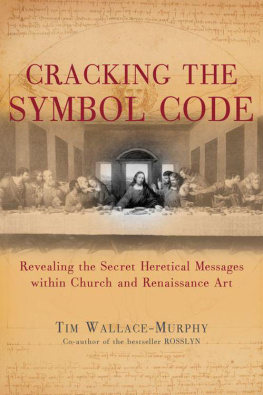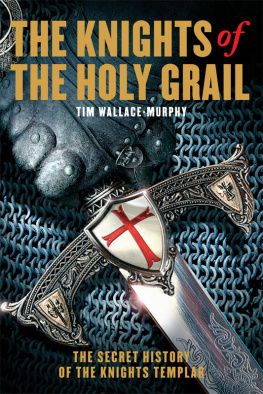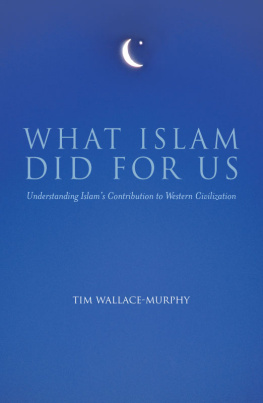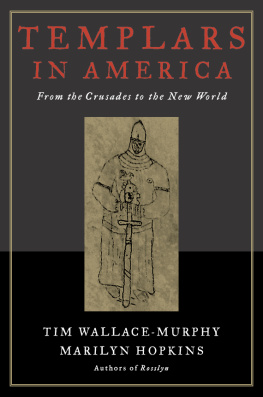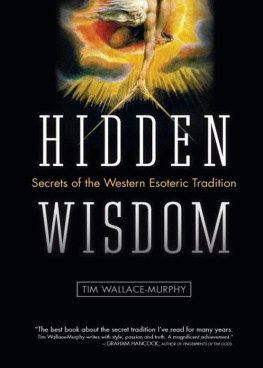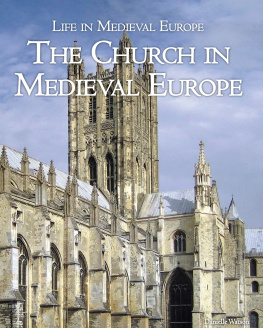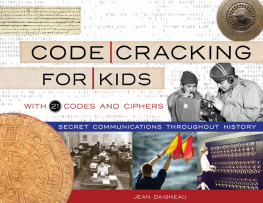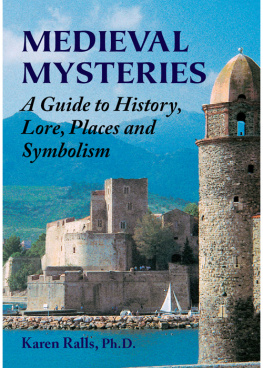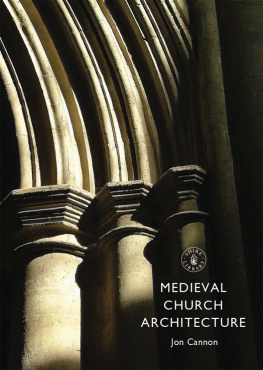Tim Wallace-Murphy studied medicine at University College, Dublin and then qualified as a psychologist. He is now an author, lecturer and historian, and has spent over thirty years following his personal spiritual path. He is co-author of three bestsellers: The Mark of The Beast, Rex Deus: The True Mystery of Rennes-Le-Chteau and Rosslyn: Guardian of the Secrets of the Holy Grail. This last book provided invaluable source material to Dan Brown for his bestselling novel, The Da Vinci Code. He lives in Devon.
List of Plates
The publisher would like to thank the following people, museums, and photographic libraries for permission to reproduce their material. Every care has been taken to trace copyright holders. However, if we have omitted anyone we apologize and will, if informed, make corrections to any future edition.
Plate 1 John the Baptist, Chartres Cathedral Patrick Keene
Plate 2 Carving of the Last Judgement, Dame de Paris Patrick Keene
Plate 3 Carving of Mary Queen of Heaven, Notre Dame de Paris Patrick Keene
Plate 4 Carving of Adam & Eve & Serpent, Notre Dame de Paris Patrick Keene
Plate 5 Signs of the Zodiac Patrick Keene
Plate 6 Last Judgement, Amiens Cathdral Tim Wallace-Murphy
Plate 7 Le Beau Dieu, Amiens Cathedral Patrick Keene
Plate 8 The Central Tympanum of the west Front of Chartres Cathedral Patrick Keene
Plate 9 The Tympanum of the Portail de Vierge, Chartres Patrick Keene
Plate 10 Carving of Pythagoras, Chartres Tim Wallace-Murphy
Plate 11 Carving of the Last Judgement, Chartres Patrick Keene
Plate 12 Rose Window North Transept Chartres Cathdral Sonia Halliday Photographs
Plate 13 Notre Dame du Pillier, Chartres Cathdral Tim Wallace-Murphy
Plates 14 & 15 The Tarot Trumps Brian Innes
Plates 16 & 17 The Apprentice Pillar and The Master Masons Pillar, Rosslyn Chapel Tim Wallace-Murphy
Plates 1821 St Longinus window; St Mauritius window;St Michael window; St George window all Rosslyn Chapel Mike Green
Plate 22 The Madonna of the Rocks Louvre, Paris/ The Bridgeman Art Library
Plate 23 The Virgin of the Rocks National Gallery, London/ The Bridgeman Art Library
Plate 24 The Crucifixion Santa Maria della Grazie, Milan/ The Bridgeman Art Library
Plate 25 The Last Supper Santa Maria della Grazie, Milan/ The Bridgeman Art Library
Plate 26 The Tour Magdala at Rennes-le-Chteau Tim Wallace-Murphy
Plate 27 The main altar at Renne-le-Chteau Marilyn Hopkins
Plate 28 Carving of Mary Magdalene at Rennes-le-Chteau Patrick Keene
Plate 29 Carving of the Madonna and child, Rennes-le-Chteau Patrick Keene
Plate 30 Carving of Joseph and Child at Rennes-le-Chteau Patrick Keene
This work is respectfully dedicated to a treasured spiritual brother, the renowned Provenal scholar
Guy Jourdan,
Le Mage de Bargemon.
Acknowledgements
While responsibility for this book rests entirely with the author, I gratefully acknowledge the encouragement and insight I have gained over many years of research from: Alexandre Angelitti of Paris; Gerard Bacquet of Auxi le Chteau; Yves Bacquet of Bargemon, Provence; Stuart Beattie of the Rosslyn Chapel Trust; Richard Beaumont of Staverton, Devon; Dr Marco Bellani of Varese; Dr Anglo Benevento of Varese; Laurence Bloom of London; Robert Brydon of Edinburgh; Richard Buades of Marseilles; Nicole Dawe of Okehampton; Baroness Edni di Pauli of London; William and Heather Elmhirst of Dartington; Dr Reshad Field of the Chalice Foundation; Jean-Michel Garnier of Chartres; Michael Halsey of Auchterarder; Professor Biorn Ivemark of Gramazie; Patrick Keane of Paignton; Georges Keiss of the Centre dEtudes et de Recherches Templire, Campagne-sur-Aude; J. Z. Knight of the Ramtha School of Enlightenment; Elizabeth Lane of Concord; Robert Lomas of Bradford; Michael Monkton of Buckingham; Dr Hugh Montgomery of Somerset; James Mackay Munro of Penicuick; David Nelson of Lorgues-en-Provence; Andrew Pattison of Edinburgh; Alan Pearson of Rennes-les-Bains; David Pykett of Burton-on-Trent; Amy Ralston of Staverton, Devon; Victor Rosati of Totnes; Pat Sibille of Aberdeen; Niven Sinclair of London; Nicolo and Eleanora Zeno of Venice; and, those who are sadly no longer with us but from whom I have learned so much: William Anderson; Andy Boracci; Anthony Tancred; Frederic Lionel; Trevor Ravenscroft and Michael Bentine. Last, but certainly not least, Duncan Baird, Michael Mann, John Baldock, Penny Stopa and Gillian Holmes, all of Watkins Publishers.
Introduction
T he phenomenal sales of Dan Browns thriller, The Da Vinci Code, and the success of Umberto Ecos Foucaults Pendulum are a demonstrable sign of the publics growing fascination with the idea that heretical thought has been secretly encoded within religious art. Despite the fictional nature of both The Da Vinci Code and Foucaults Pendulum, the truth about Hidden Symbolism is far more fascinating than any fiction.
This work is an explanation of the history and importance of symbolism in mankinds long and tortuous exploration of the fascinating world of the spirit: one that focuses heavily on the development of Christian symbolism and then, within that, delineates why and how heretical ideas were kept hidden from the prying eyes of a repressive hierarchy. It demonstrates some of the indicators that will alert astute seekers to the presence of hidden symbolism before introducing them to some of the many layers of meaning conveyed by this truly arcane art form. Direct experience of the mystical effects of sacred symbolism opens up not only the hidden world of the medieval heretics but also the inner world of the viewer leading to transformative experiences that are hand-tailored to the needs and understanding of the individual.
Any study of works such as this should be followed, as soon as possible, by personal on-site visits to view such symbols in situ, for sacred symbols need to be experienced rather than explained. What a true symbol expresses is ultimately intangible; it conveys a mystery that can only be felt and cannot be adequately expressed in words. Such a symbol is the mysterious meeting-point between the material and the spiritual, the conscious and the unconscious that will act, at one and the same time, both as a signpost and as a transformative catalyst on the quest for spiritual enlightenment the true objective of the search for the Holy Grail.
Section 1
In the Beginning
T he field of symbolism is one that spans the entire history of man, for sacred symbolism pervades and charts almost the entire history of mankind from distant Palaeolithic times to the present. The earliest archaeological artefacts pertaining to man are human bones and primitive stone tools, and even these simple relics seem to possess a spiritual aspect that was noted by Jacob Bronowski in his description of the Taung baby, the primordial infant from which, he claims, the whole adventure of man began. He wrote: The human baby, the human being, is a mosaic of animal and angel. Thus inadvertently putting his finger on one essential difference between man and other animals.

